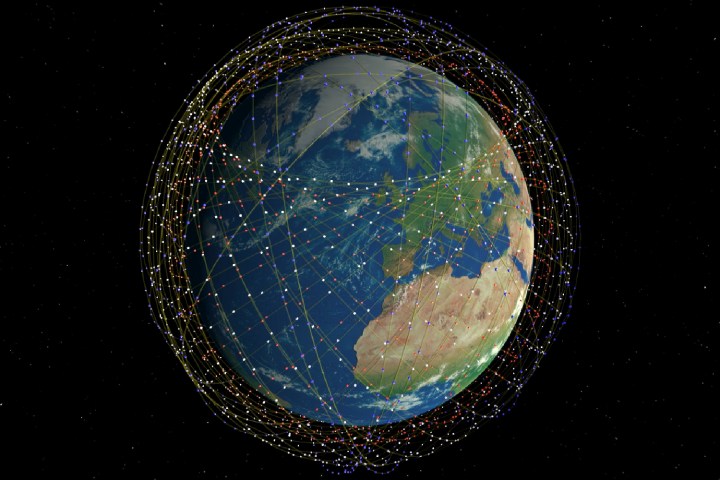
SpaceX stumbled at the first hurdle with its recent attempt to launch 60 satellites into space — which wound up being pushed back a day due to bad weather, and then called off yet again. It was an unfortunately inauspicious start for Elon Musk’s Starlink project, which aims to rain down internet from the heavens, courtesy of 12,000 satellites.
But while Starlink is predicted to take until November 2027 to get its entire army of satellites into orbit, it won’t take nearly so long for us to start reaping the benefits of the new service. According to Musk, initial service for Starlink’s cheap, fast internet access in remote areas (along with airplanes, ships, and other moving vehicles) could be ready to go in just one year from now.
“For the system to be economically viable, it’s really on the order of 1,000 satellites,” Musk said during a recent phone call with reporters. “Which is obviously a lot of satellites, but it’s way less than 10,000 or 12,000.” Musk plans to launch around 1,000 satellites over the next 12 months, followed by another 1,000 every year following. Musk says that service could be available even before 1,000 satellites have been launched. An “initial” service in the U.S. would reportedly take just 400 satellites, while a more “significant” service would be possible with 800 satellites.
Those numbers seem achievable. However, it would still represent a significant percentage of the overall operational satellites in orbit. At present, there are around 2,000 operational satellites orbiting Earth — in addition to thousands of deceased satellites. Considering that number, and SpaceX’s plans to launch at least one Starlink mission every month, it won’t be long before the company is a majority player in the overall orbit game.
“I think within a year and a half, maybe two years — if things go well — SpaceX will probably have more satellites in orbit than all other satellites combined,” Musk said. “Basically, a majority of the satellites in orbit will be SpaceX’s.”
Each Starlink satellite will reportedly be capable of conveying around 1 terabit of functional bandwidth. As Business Insider points out, that is a sufficient amount to provide 4K streaming video to more than 1,000 people at the same time.
Editors' Recommendations
- Tesla’s Optimus humanoid robot can now dance like Elon Musk
- Elon Musk throws some light on his very busy schedule
- Watch the key moments from SpaceX’s spy satellite launch
- Elon Musk hit with lawsuit over controversial Twitter stake
- Elon Musk asks Twitter users if they want an edit button

